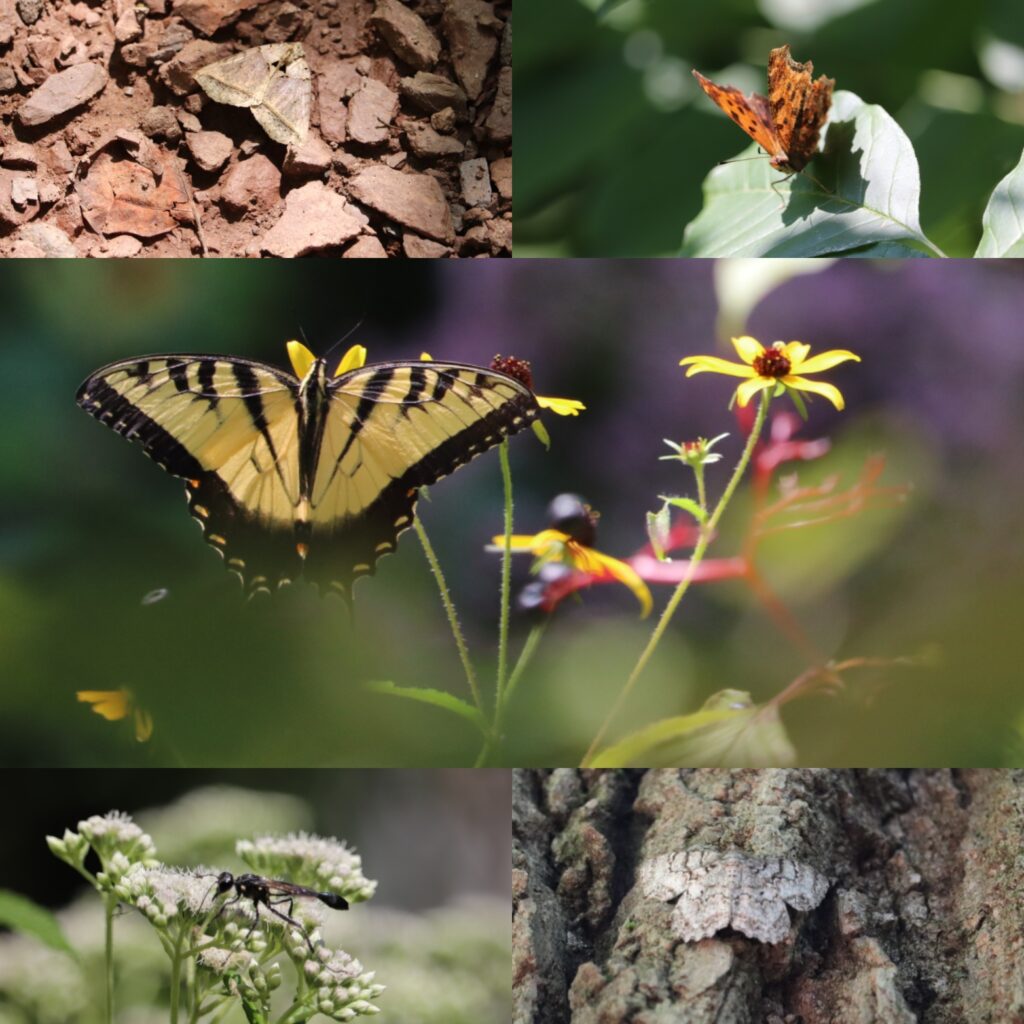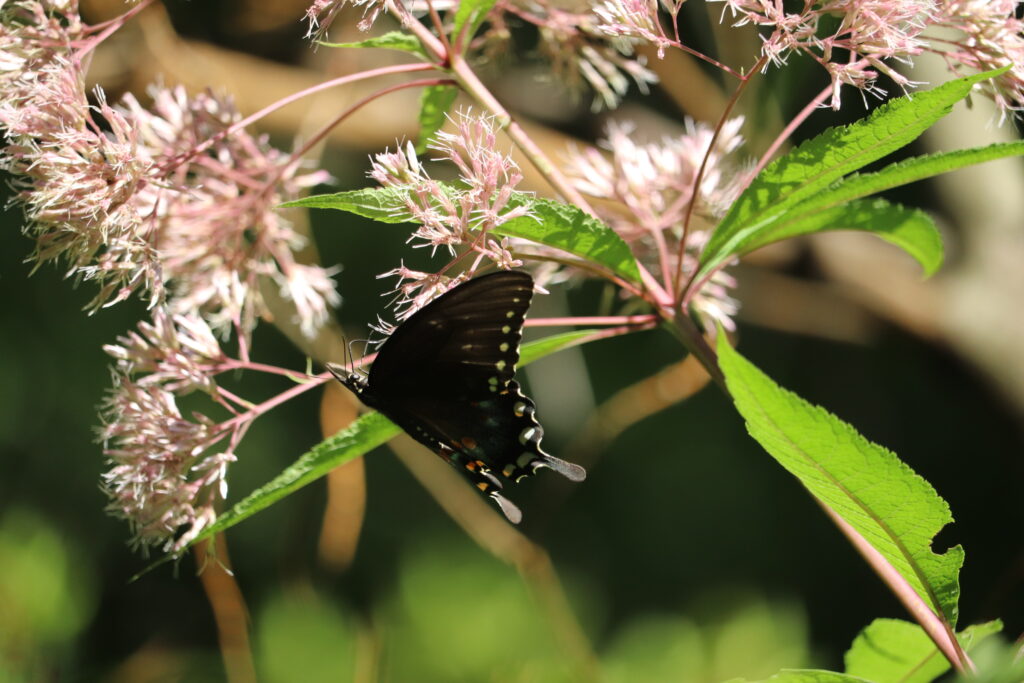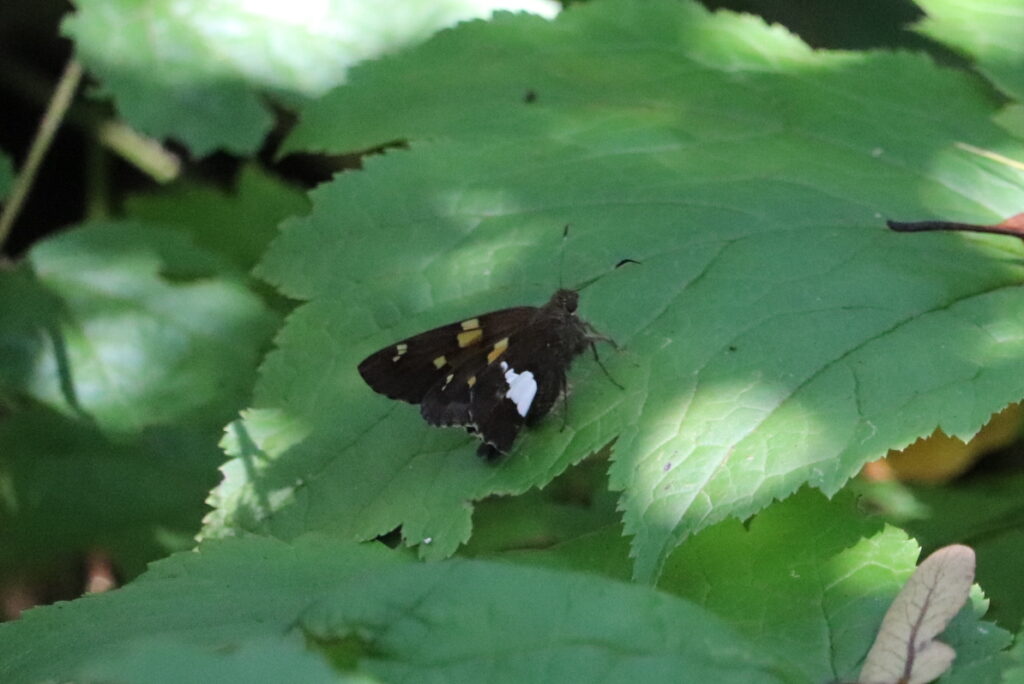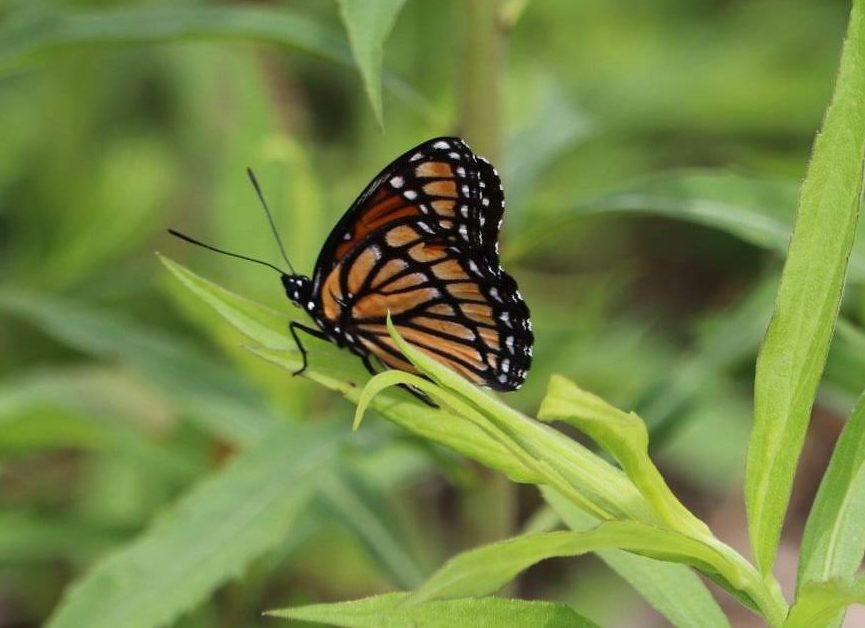Nocturnal creatures camouflage themselves during the day while stunning butterflies are as beautiful as the flowers they land on. While one is busy blending in, the other is standing out. But at some point, millions of years ago, a moth went from camo to color.
The pictures in this post (including the wasp) were all taken one morning at Bowman’s Wildflower Preserve, in beautiful Bucks County, Pennsylvania in mid August. The wasp is not a butterfly or a moth, but it was just too cool looking not to include.
“…nighttime moths evolved into butterflies not to escape being eaten by bats, but to enjoy the new food source of delicious nectar in flowering plants that had evolved”
While on my walk through the Preserve I was never far away from something glorious feeding on a flower or buzzing by. One time I looked up at the bark of a Tulip Poplar to find a super camouflaged moth, and I looked down at the stones and came super close to crushing another camouflaged moth. Both hard to see and both super still. And both made me think a lot about camouflage in the natural world on the way home for some reason.
These pictures led me to further dive into the differences between moths and butterflies furthering my knowledge of Lepidoptera. (The fancy name that is the order of insects that includes butterflies and moths.) The deeper into my understanding, the more I realized, butterflies are actually a moth that went out for breakfast one day, and never went back to flying at night ever again. I was fascinated.
It turns out that scientists only recently discovered that nighttime moths evolved into butterflies not to escape being eaten by bats, but to enjoy the new food source of delicious nectar in flowering plants that had evolved in the Cretaceous period, about 125-130 million years ago.
The paper was published in Proceedings of the National Academy of Sciences by Akito Y. Kawahara and colleagues. It is titled: Phylogenomics reveals the evolutionary timing and pattern of butterflies and moths. Dr. Kawahara is from the McGuire Center for Lepidoptera and Biodiversity, Florida Museum of Natural History, University of Florida, Gainesville, FL. And for a printer friendly, PDF version of the paper, click here.
I had to look up a few words, starting with “Phylogenomics” which means: the intersection of the fields of evolution and genomics. But even with my simple knowledge of “Kings Play Chess on Funny Green Squares” that I remember from biology class to recall the order of Kingdom, Phylum, Class, Order, Family, Genus, Species I found I was soaking up this biology lesson with a thirst for more!
I discovered that butterflies actually evolved from moths. Here is a more digestible easy to read article from The New York Times:
How the Butterfly Discovered Daylight
“Nocturnal moths evolved into daytime butterflies not to escape bats, as biologists once thought, but to enjoy an abundant new drink: the nectar of flowering plants.”

Pictured above in order from Top to Bottom, Left to Right:
Black Bit Moth (Celiptera frustulum)
Eastern Comma Butterfly (Polygonia comma)
Eastern Tiger Swallowtail Butterfly (Papilio glaucus)
Gold-marked Thread-waisted Wasp (because it is so cool looking with those gold spots!
(Eremnophila aureonotata)
The Porcelain Gray Moth (Protoboarmia porcelaria)
And still others:


Thirsty for more? Here is a video I found on YouTube that talks about the new research. A worthy lunch and learn for your next meal, or breakfast blurb, or dinner and a movie…..Your choice. It is about 10 min in length. Enjoy!





